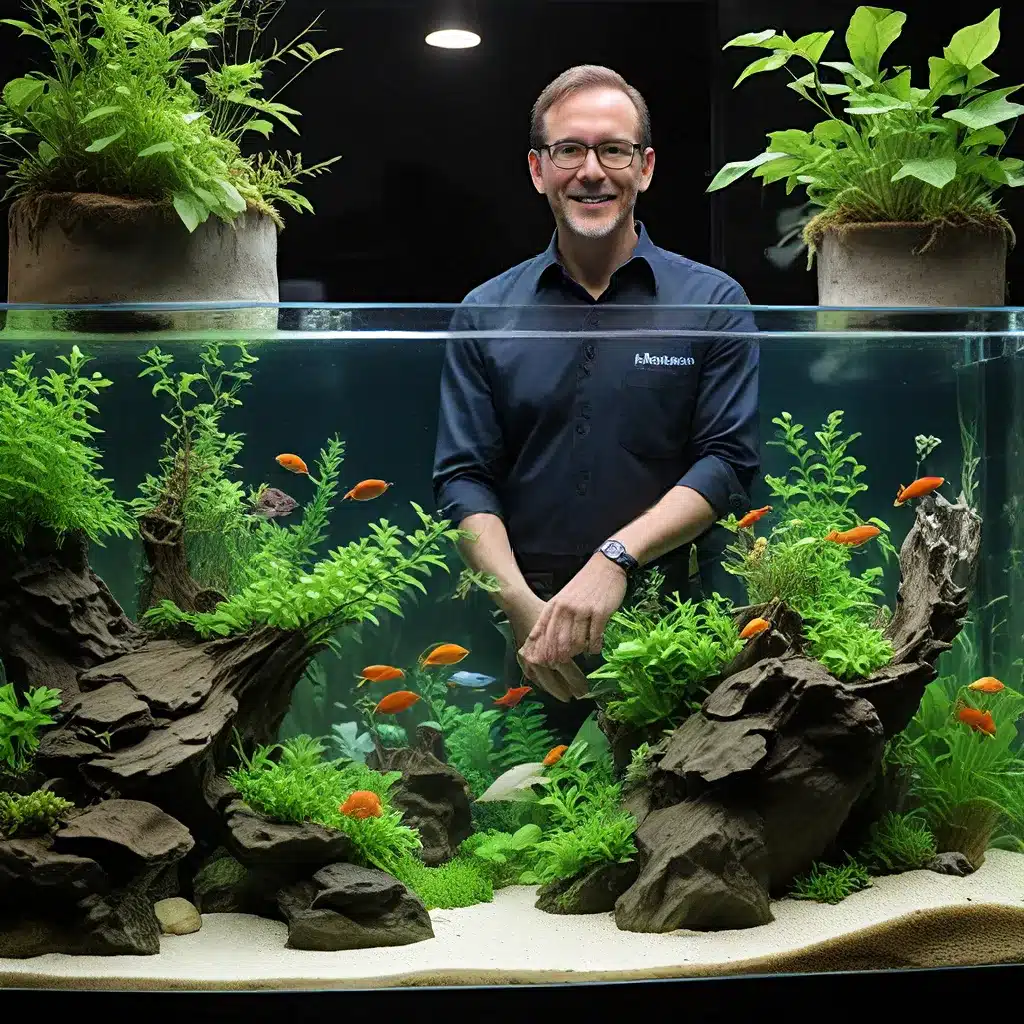
Balancing Aquatic Ecosystems: The Art of Aquascaping
Aquascaping, the intricate art of designing and maintaining aquatic environments, is a captivating pursuit for aquarium enthusiasts. Beyond simply arranging decorative elements, this practice delves into the delicate balance of plant life, water chemistry, and substrate composition. By understanding the nuances of aquascaping, aquarists can create vibrant, thriving aquatic ecosystems that not only captivate the eye but also foster the long-term health and well-being of their aquatic inhabitants.
One of the key tenets of sustainable aquascaping is the careful selection of plant species. Not all aquatic plants are created equal, and choosing the right combination can make all the difference in the success of an aquarium. Some plants, for instance, are adept at absorbing excess nutrients, effectively filtering the water and maintaining optimal water quality. Others, with their lush foliage and intricate root systems, provide vital hiding spots and shelter for fish, shrimp, and other aquatic creatures. By incorporating a diverse array of plant life, aquarists can mimic the natural balance found in thriving aquatic habitats, creating a self-sustaining ecosystem that requires less active maintenance.
Choosing the right aquarium plants is just the first step in the aquascaping journey. Aquarists must also carefully consider the layout and arrangement of their aquarium’s hardscape – the rocks, driftwood, and other decorative elements that provide structure and visual interest. The placement of these items can dramatically influence the flow of water, the distribution of light, and the overall aesthetics of the aquarium. By strategically arranging the hardscape, aquarists can create captivating aquascapes that not only delight the eye but also support the needs of their aquatic inhabitants.
Filtration and Water Management: The Foundation of a Thriving Aquarium
Alongside the art of aquascaping, the proper management of water quality and filtration is a critical component of long-term aquarium success. Maintaining optimal water parameters – such as temperature, pH, and dissolved oxygen levels – is essential for the health and well-being of aquatic life. Aquarists must carefully select and maintain their filtration systems, ensuring that they effectively remove waste, toxins, and excess nutrients from the water.
While mechanical filtration is a fundamental component of any aquarium setup, biological filtration is equally important. This process involves the cultivation of beneficial bacteria that break down harmful ammonia and nitrites, converting them into less toxic nitrates. By establishing a thriving biological filtration system, aquarists can create a self-sustaining aquatic environment that requires less intensive maintenance.
Choosing the right filtration system for your aquarium can be a daunting task, as there are numerous options available, each with its own unique benefits and drawbacks. From hang-on-back (HOB) filters to canister filters and sump systems, aquarists must carefully consider the size of their aquarium, the specific needs of their inhabitants, and their own maintenance preferences.
Species-Specific Care: Tailoring Your Aquarium to Thrive
While the foundations of aquascaping and water management are essential for overall aquarium success, the specific needs of the aquatic species themselves cannot be overlooked. Different fish, shrimp, and other aquatic creatures have unique requirements when it comes to water parameters, tank size, diet, and social behavior. Carefully researching the care requirements of each species is crucial to ensure their long-term health and well-being.
For instance, some fish species thrive in densely planted aquariums, where they can find ample hiding spots and shelter, while others prefer more open swimming spaces. Substrate composition and water flow can also have a significant impact on the comfort and behavior of certain species. By catering to the specific needs of the inhabitants, aquarists can create vibrant, thriving aquatic communities that not only look stunning but also provide a high quality of life for their aquatic residents.
Selecting the right fish species for your aquarium is a critical step in the journey towards long-term success. Novice aquarists may find it beneficial to start with hardy, low-maintenance fish that are more forgiving of minor water quality fluctuations. As they gain experience, they can then expand their aquarium to include more delicate or challenging species.
Bridging the Gap: Connecting Aquarium Enthusiasts
The aquarium hobby is a vibrant, ever-evolving community, where enthusiasts from around the world share their knowledge, experiences, and passion for these captivating underwater worlds. By connecting with like-minded individuals, aquarists can access a wealth of information, troubleshoot challenges, and find inspiration for their own aquascaping projects.
King Aquarium, a leading resource for aquarium enthusiasts, provides a comprehensive platform for aquarists to explore the latest trends, techniques, and best practices in the hobby. Through their informative blog posts, interactive forums, and curated product recommendations, King Aquarium empowers aquarists of all skill levels to create and maintain thriving aquatic environments.
Conclusion: Embracing the Aquarium Hobby
Embarking on the aquarium hobby is a journey of discovery, creativity, and environmental stewardship. By harnessing the principles of sustainable aquascaping, effective water management, and species-specific care, aquarists can cultivate aquatic ecosystems that not only captivate the senses but also promote the long-term health and well-being of their aquatic inhabitants. Through the exploration of this enchanting hobby, aquarists can reconnect with the natural world, foster a deeper appreciation for aquatic life, and inspire others to join in the quest for aquarium alchemy.

